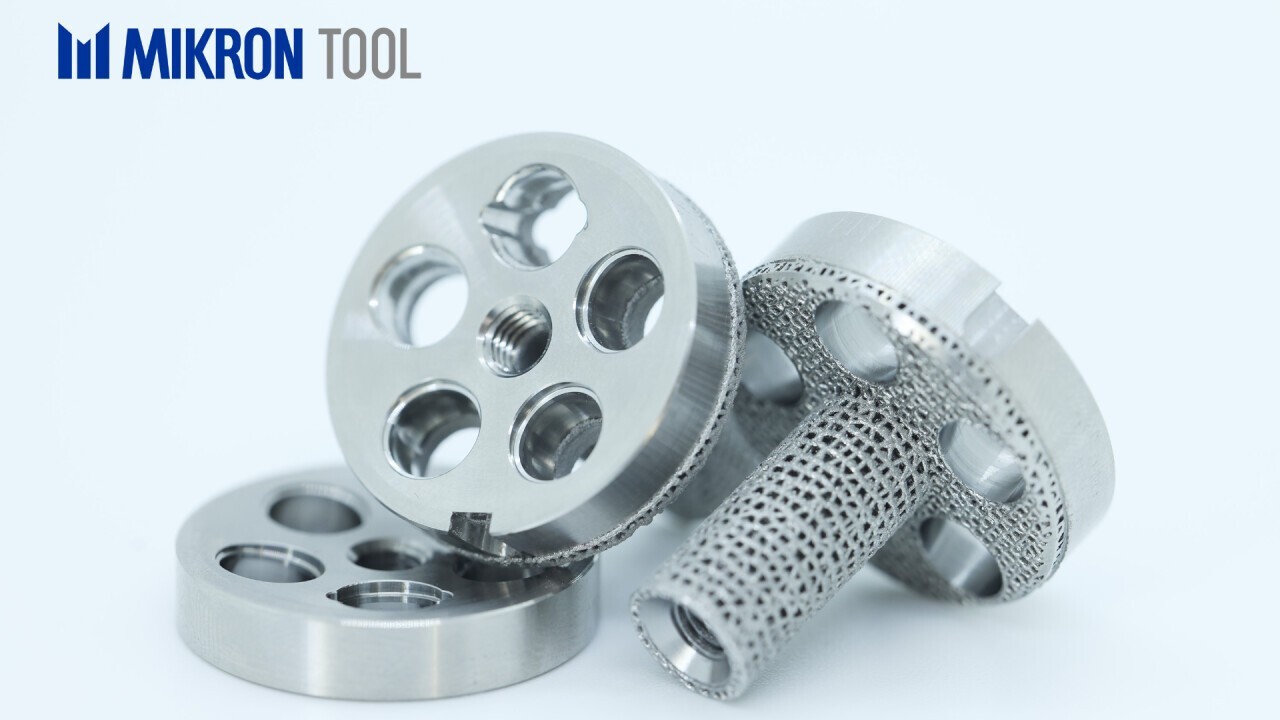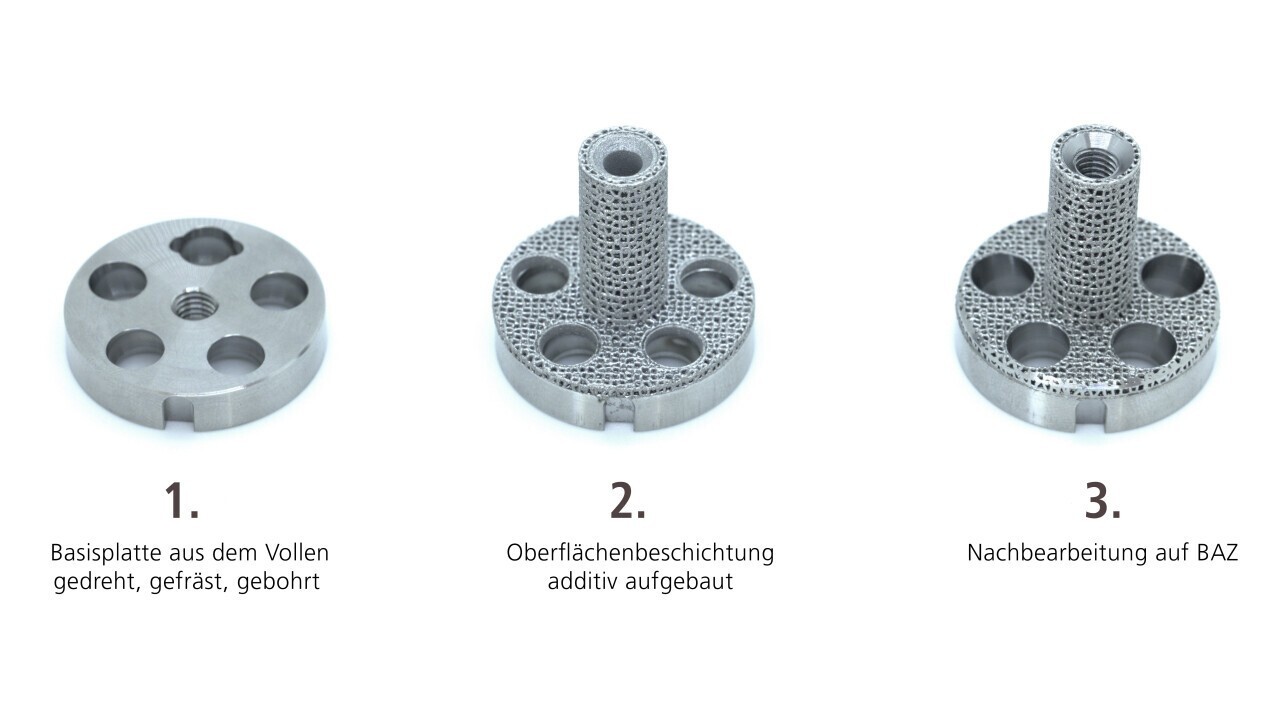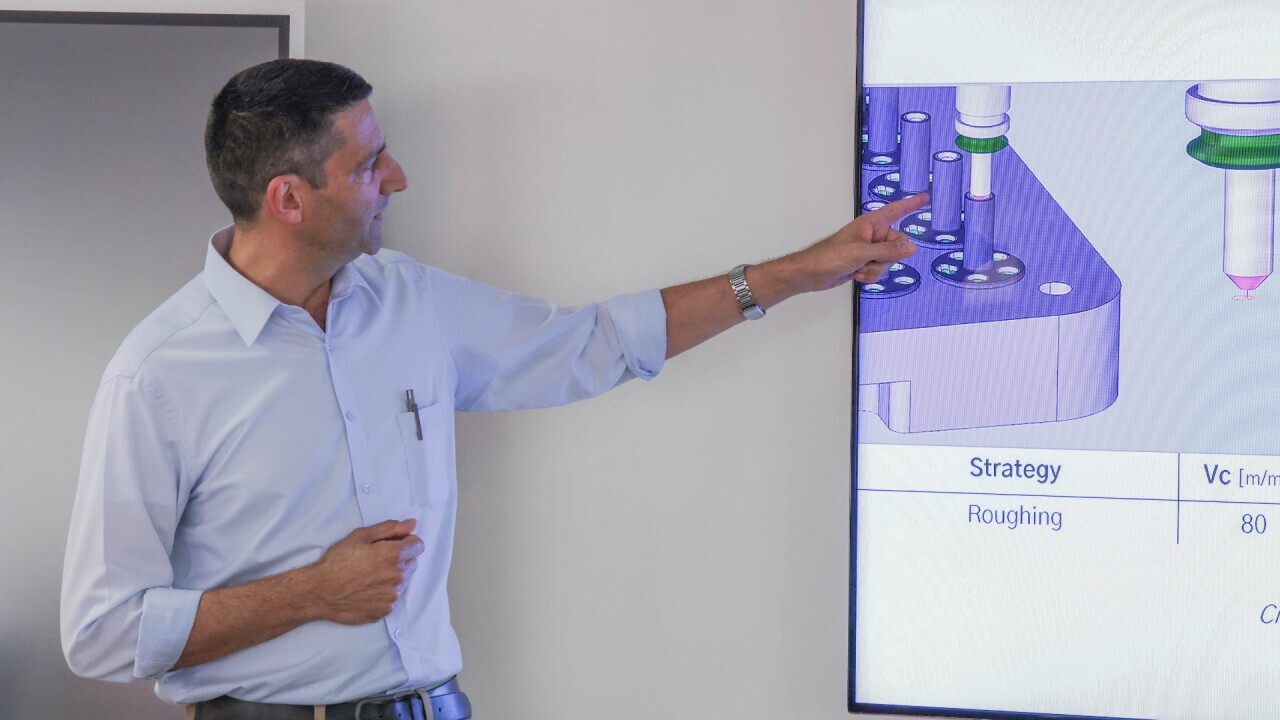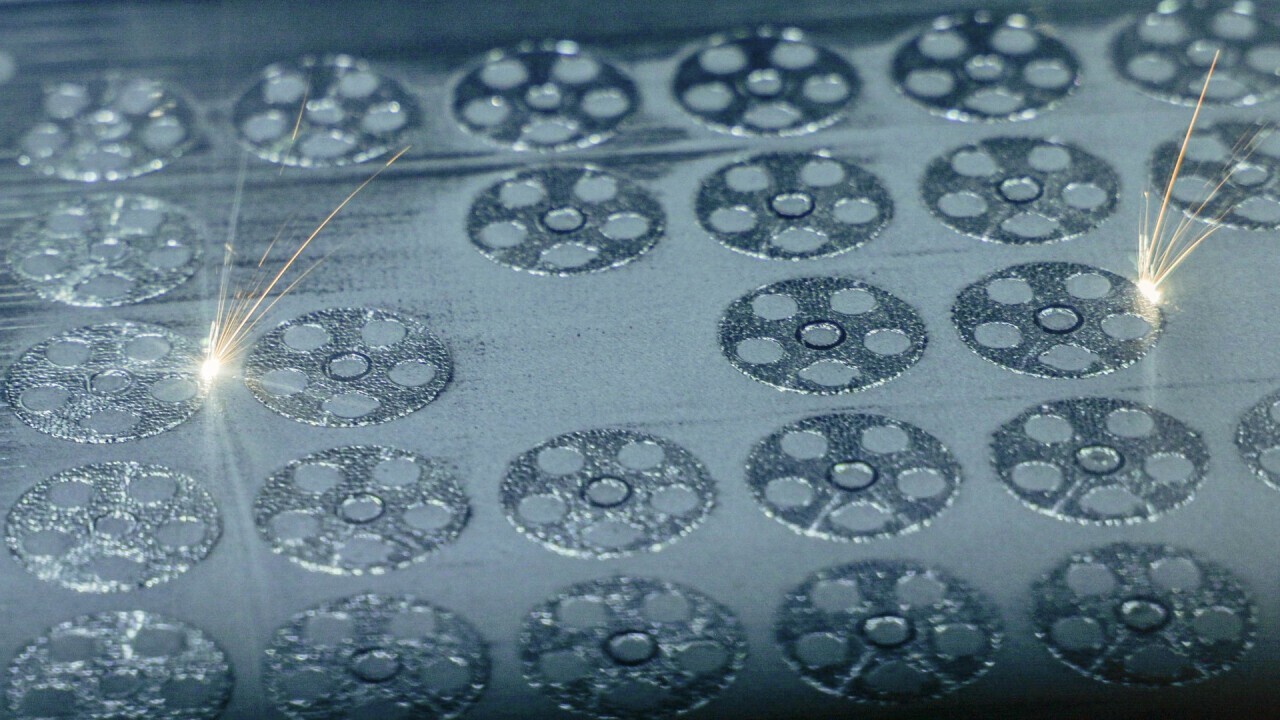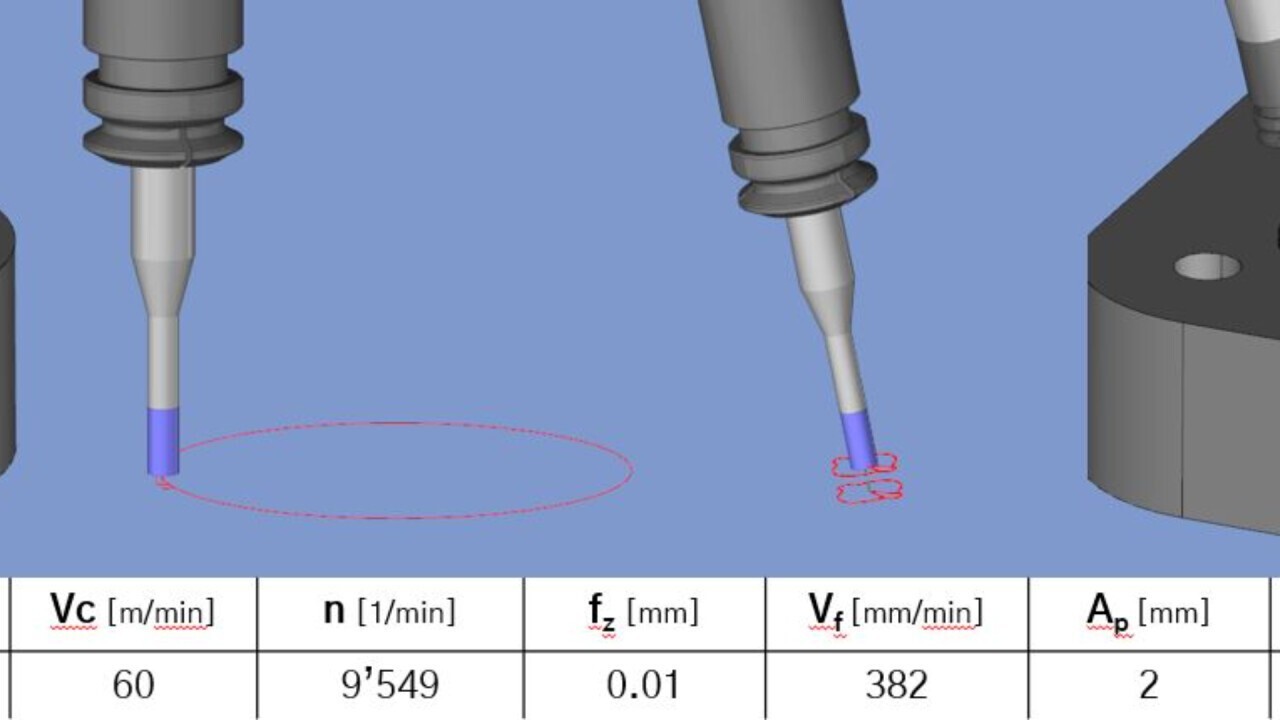The synergy between additive 3D printing and machining paves the way for new methods of medical production. Mikron Tool, in collaboration with DMG MORI, has demonstrated how hybrid production offers unprecedented advantages for the production of medical components.
Realising visions with strong partners
Thanks to the collaboration within the DMQP partnership, Mikron Tool and DMG MORI are engaged in a dynamic exchange of technology. A crazy idea was born during the DMG MORI in-house exhibition in Pfronten in 2022. Namely, when Dr Alberto Gotti (Head of R&D at Mikron Tool) and Lell Friedemann, Managing Director of DMG MORI Additive GmbH, discussed the possibilities of how traditional machining could be used sensibly in combination with 3D printing technology. The two "visionaries" then decided to test the new idea of hybrid production in practice using a component from the field of medical technology.
Mikron Tool recently presented a hybrid manufacturing process for the series production of a medical technology component at its Technology and Application Centre and compared it with conventional production methods. Does the synergetic application of conventional machining and a laser melting process offer decisive advantages?
In order to answer this question properly, Mikron Tool developed the following test setup for a glenoid base plate - a titanium component of an inverse, cementless shoulder prosthesis - with the support of leading technology partners:
- Machining with subsequent coating (hydroxyapatite or titanium coating spraying).
- Purely additive construction of the component using the laser melting process with post-processing on a machine tool.
- Hybrid production, the combination of the two above-mentioned production methods.
The base plate produced on a turning and milling centre has high precision and excellent surface roughness. Ideal for subsequent 3D printing. This creates the central cavity and a structure with excellent osseointegration properties that requires minimal post-processing on a 5-axis machining centre.
This approach shortens the production time and produces an excellent structure for osseointegration and the material utilisation rate in this process is optimal.
In hybrid manufacturing, the cost saving is between 4% and 9% compared to conventional methods.
Request the white paper with the detailed test procedure here.
Or visit Mikron Tool at booth 316 in hall 1 for more information.
